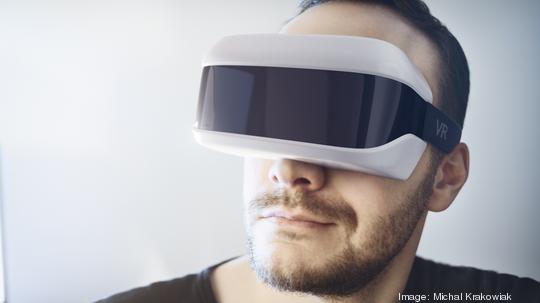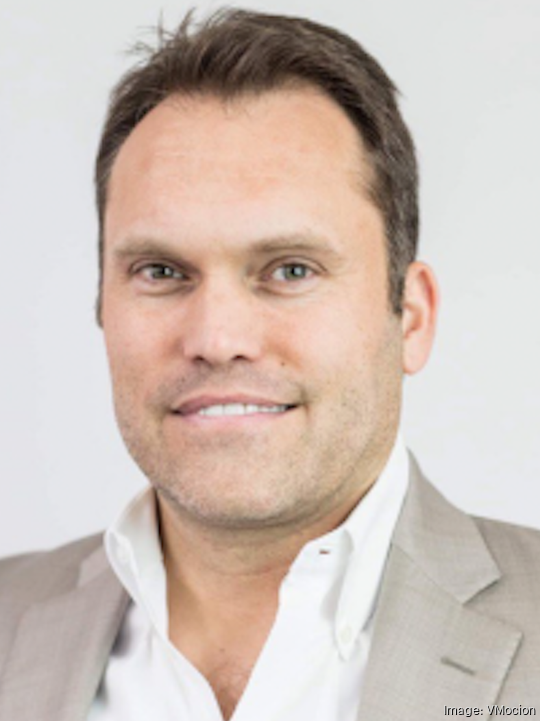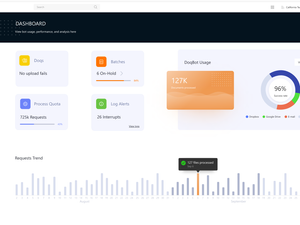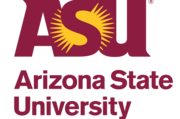
A Scottsdale-based startup is advancing its virtual motion technologies through a new round of capital.
VMocion recently raised $1.25 million of a $3 million seed round, led by AZ Crown Investments and the Mayo Clinic. VMocion plans to raise the remainder of its $3 million seed round later this year.
As part of the funding deal, Eric Crown, co-founder of Insight Enterprises Inc. and principal of AZ Crown, joined VMocion's board of directors.
VMocion will use the investment for marketing, sales, research and development, including conducting more studies for use of its 3V and WAIV technologies in specific applications, said CEO Nicholas Aretakis.
VMocion's technologies allow more users to engage in virtual reality experiences and participate for longer periods without discomfort by eliminating motion sickness through a process called galvanic vestibular stimulation.
The company’s 3V technology sends tiny electric impulses to a nerve in the ear that maintains balance, telling it to match the motion on the VR screen. As a result, VR users "feel" the same motion on the screen, greatly reducing cybersickness.
“VR/AR is kind of a low hanging fruit,” Aretakis said. “It's an area of technological growth that has been poised for adoption for several years.”
Cybersickness, however, has been a major hurdle to widespread VR product adoption with some 30% to 40% of users experiencing it, he said.
“There might still be a small subset of the population that just gets illness by being on a computer for a certain amount of time, but we can neutralize that with this technology,” he said.
VMocion’s 3V technology can be integrated with VR headsets, smartphones, video game consoles and other 2D and 3D digital visual devices, according to the company.

VMocion's WAIV technology — which also leverages galvanic vestibular stimulation — could potentially be used in headsets or earphones to eliminate motion sickness associated with flight simulators, amusement parks, sea travel and automobiles, Aretakis said.
“Especially as we see a greater adoption of electric vehicles that have these advanced ADAS systems, which provide rapid acceleration and deceleration,” he said. “It causes motion sickness for a lot of passengers. So our WAIV technology can neutralize that in consumer grade stereo headphones.”
VMocion unveiling technologies at CES in Las Vegas
VMocion, founded in 2016, collaborated with the Mayo Clinic on the 3V and WAIV technologies, which evolved from decades of research conducted by a team of experts at the organization’s Aerospace Medicine and Vestibular Research Laboratory.
The technology is based on work supported by grants from the U.S. Army and U.S. Navy.
“The Mayo Clinic's interest in this science, in particular, is to find commercial pathways to develop technologies to be able to better study and understand the physiology, so they can find cures for organic diseases like ménière’s disease and vertigo,” Bradley Hillstrom Jr., co-founder and chairman of VMocion, said. “But without the technology being developed on the commercial side, there really isn't accessibility for the sciences to do their research.”

The Mayo Clinic owns intellectual property patents for the two technologies and granted an exclusive, perpetual license to VMocion.
VMocion plans to provide customers with a license to use the technologies, along with reference designs, circuitry and a software developer kit for integration into VR/AR headsets, headphones and flight simulators.
“We will work with big OEMs — the folks making the VR/AR headsets — and also people that are working on stereo headphones, automotive or other 2D and 3D gaming headsets,” Aretakis said.
While VMocion has held demonstrations of its technologies over the past few years, efforts are now underway to commercialize it with plans to enter the market by 2025, Aretakis said.
The company developed a module with its proprietary software and is showcasing it at the Consumer Electronics Show, held Jan. 9-12 in Las Vegas.
“That’s going to be the first stage of commercialization — working with customers and partners, letting them see it and the next phase is we'll start working on integration into their platform,” Aretakis said. “They'll take our reference circuitry and proprietary software, we’ll work out license agreements and then they'll work to develop prototypes, hopefully later this year.”










